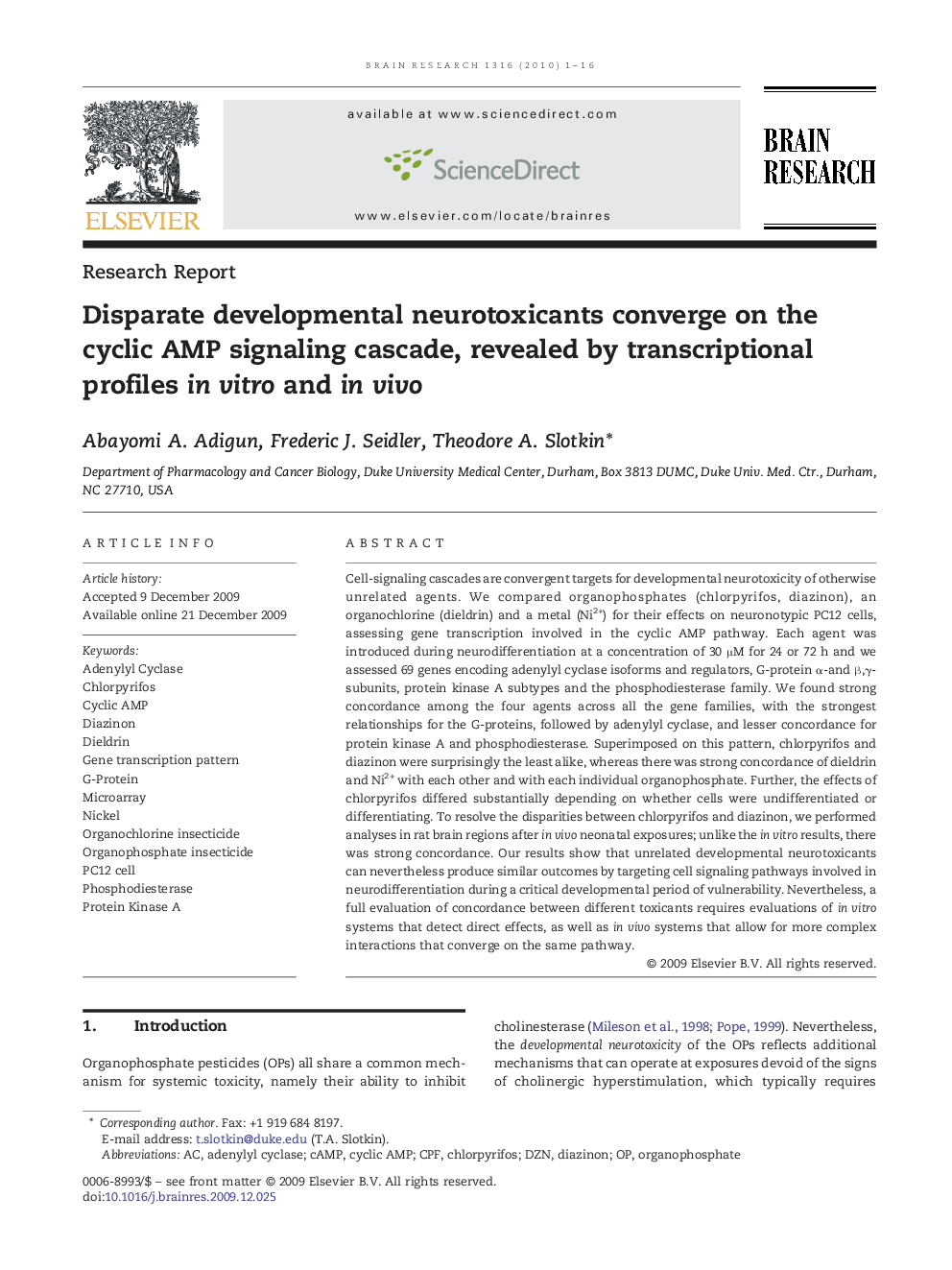| Article ID | Journal | Published Year | Pages | File Type |
|---|---|---|---|---|
| 4327323 | Brain Research | 2010 | 16 Pages |
Cell-signaling cascades are convergent targets for developmental neurotoxicity of otherwise unrelated agents. We compared organophosphates (chlorpyrifos, diazinon), an organochlorine (dieldrin) and a metal (Ni2+) for their effects on neuronotypic PC12 cells, assessing gene transcription involved in the cyclic AMP pathway. Each agent was introduced during neurodifferentiation at a concentration of 30 μM for 24 or 72 h and we assessed 69 genes encoding adenylyl cyclase isoforms and regulators, G-protein α-and β,γ-subunits, protein kinase A subtypes and the phosphodiesterase family. We found strong concordance among the four agents across all the gene families, with the strongest relationships for the G-proteins, followed by adenylyl cyclase, and lesser concordance for protein kinase A and phosphodiesterase. Superimposed on this pattern, chlorpyrifos and diazinon were surprisingly the least alike, whereas there was strong concordance of dieldrin and Ni2+ with each other and with each individual organophosphate. Further, the effects of chlorpyrifos differed substantially depending on whether cells were undifferentiated or differentiating. To resolve the disparities between chlorpyrifos and diazinon, we performed analyses in rat brain regions after in vivo neonatal exposures; unlike the in vitro results, there was strong concordance. Our results show that unrelated developmental neurotoxicants can nevertheless produce similar outcomes by targeting cell signaling pathways involved in neurodifferentiation during a critical developmental period of vulnerability. Nevertheless, a full evaluation of concordance between different toxicants requires evaluations of in vitro systems that detect direct effects, as well as in vivo systems that allow for more complex interactions that converge on the same pathway.
